Forget about hybrid horrors, multi-driver maladies, and electrostatic eccentricities, Acoustune brings an unforgettable sound with just one well-tuned dynamic driver.
In the past, great things came in threes, like divas (Mariah, Whitney, and Celine); action heroes (Stallone, Willis, Schwarzenegger); and religion (er, better not). Likewise, for top-of-the-line (TOTL) earphones, there were just Sennheiser IE800, AKG K3003, and Shure SE846. If you aimed for the top you only need to consider those. It was a simple and glorious time.
Come 2018, the prices of flagship in-ear monitors (IEMs) have at least doubled, and there is a mushrooming of boutique brands with spectacular prices, leading to market infatuation, saturation, and fatigue. There’s a yearning to go back to the way things were, of big brands and one marquee flagship to last years, for bragging rights purposes. Something… bona fide.
- Extravagant presentation and build quality
- Good accessory set
- Stunning quality stock cable with Pentaconn jack
- Extraordinary shell design
- Comfortable fit
- Near-flawless, coherent signature
- Authoritative bass tuning
- Strikingly beautiful mids tuning
- A wide soundstage with fairly good imaging
- Value-for-money pricing
- Poor sound isolation
- Average soundstage dimensions
- Lacks the final bit of technical prowess to be truly flagship-grade
Pride or Ego
The search for the bona fide continues too in Japanese brands. You feel a certain assurance (even a glowy, egotistical warmth) when you shop, for example, Sony, Canon, Sharp or Panasonic, emblazoned in modest lettering “Made In Japan”. This is the exact kind of happiness money can buy lol.
So when I mention Nippon DICS Co. Ltd, you might wonder where the heck I’m getting at. Hold your horses. NDICS is a manufacturing conglomerate specializing in medical instruments, lighting apparatus and for us, audio stuff. They designed and developed the Pentaconn 4.4mm, 5-pole jack, and socket. Considering the rapid adoption of 4.4mm as a new standard for balanced audio, yes, they are bona fide alright.
A New Player
Acoustune is the IEM company under the NDICS umbrella. Relatively new to the game, they first made waves with the HS1501AL and HS1551CU, a well-regarded single dynamic driver (DD) IEMs with a nice warm sound in a distinctive metal shell, at a price that won’t render you in debt. The 1551 has drool-worthy Iron Man colors to rack up some design points too.
Acoustune IEMs deploy a unique Myrinx diaphragm made of medical grade materials that promise less distortion and wider frequency response, compared to conventional dynamic drivers. They have taken things up another notch with the introduction of two new flagships, HS1650CU and HD1670SS, featuring an improved 10mm Myrinx driver and a flashier, 8-core silver-plated copper cable.
Black Panther
Today we examine, in extreme close-up, the HS1650CU. I chose to review this compared to the more expensive 1670SS because I enjoyed the sound and appearance more. They share the same superpowered Myrinx driver, and only differ in housing material (1650 has a brass chamber compared to 1670’s stainless steel) and color scheme (think Black Panther vs. Silver Surfer).
I would like to extend my sincerest thanks to Mr. Takatoshi Seto, assistant manager of NDICS Malaysia for offering a discount in exchange for this review. Acoustune does not have an official store but has an extensive distribution network in Asia. Locally, the HS1650CU retails for MYR2699 (about USD650) and is available through Stars Picker.
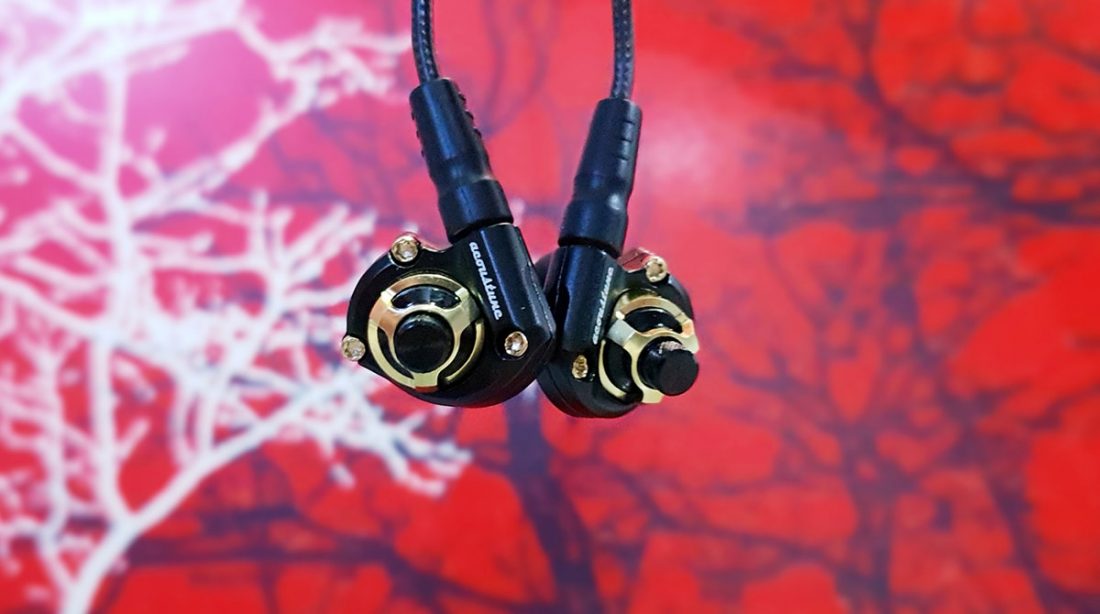
Equipment Used:
DAP
- Sony NW-WM1A “K” Modded, FW 2.0
- iBasso DX-200 with AMP8
IEMs
- Acoustune HS1650CU
- FiiO FH5
- QDC Gemini
Albums Listened
- Beth Hart & Joe Bonamassa– Black Coffee
- Daft Punk – Random Access Memories
- Denean – The Weaving
- Ed Sheeran – Divide
- Fleetwood Mac – Rumours
- Leonard Cohen – You Want it Darker
- Melissa Menago – Little Crimes
- Michael Jackson – The Essential
- Simon and Garfunkel – The Essential
- The Police – Zenyatta Mondatta
Packaging and Accessories
I’m not Brad Pitt, and will never experience Oscar night when the biggest stars are gifted luxurious goodie bags worth thousands, simply because they’re awesome. The best part is they don’t have to write reviews in exchange lol. If you read gossip rags like me, the goodie bags get as much coverage as the Oscars themselves, and the unboxing must be one squeal of delight after another.
Sometimes though, I get a taste of the good life. Not Brad-Pitt-squealing good, but pretty close. The HS1650CU packaging is so immaculate I wanted to wear gloves before opening them. Of course, I didn’t in the end, because I wouldn’t want some crummy gloves stealing my first touch of these lovelies.
The Good Life
When something is as stylishly-packaged as this, even a cardboard box is worthy of mention. The “Made In Japan” logo might have something to do with it. Inside, a sturdy aluminum case with mirror-finished Acoustune logo houses everything important. The earpieces themselves are displayed like precious gems, while the silvery cable circles around them like a picture frame.
A smaller, faux-leather carry case is also included in case you wanted less grandiosity than the aluminum case. Rounding off the accessory set are 9 pairs of ear tips (AET02 foam tips in M, AET06 double-flanges in S/M+, AET07 silicon tips in S/M/L with focus on clarity and soundstage, and AET08 silicon tips in S/M/L with bass emphasis), cable clip and tie, safety instructions and warranty information.
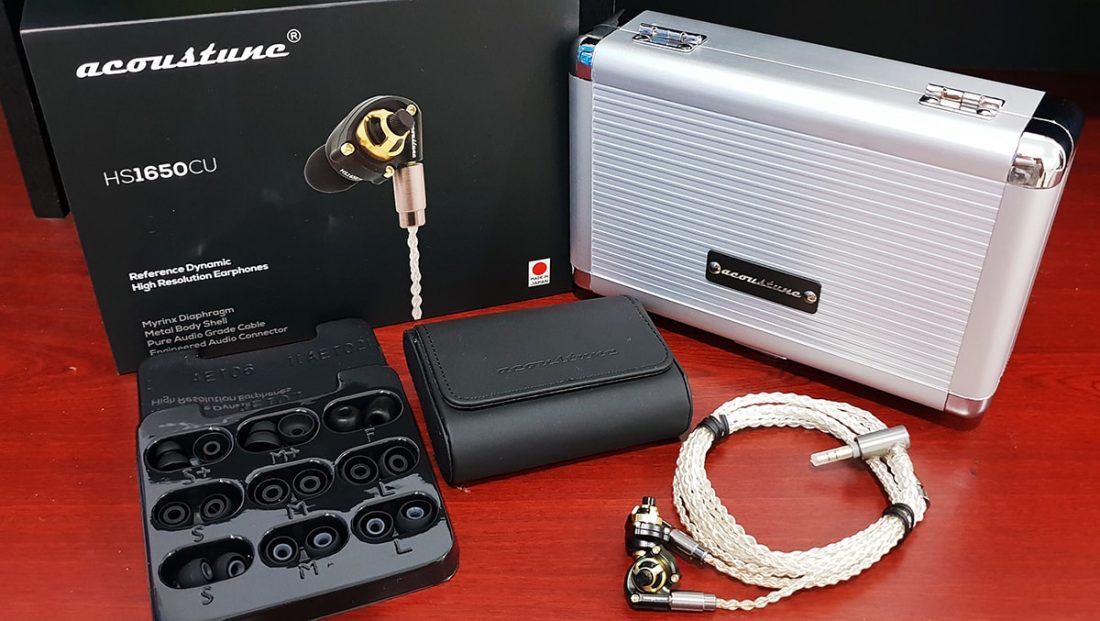
Design and Build Quality
We complain that movies are nothing but remakes and sequels nowadays. In earphone design, there’s barely little ground broken too. The all-too-popular bean shape, bullet shape, and faux custom amoeba shape are repeated ad nauseum. Once in a while, a totally original concept arrives to give the status quo a shakeup, like the movie Inception. This is where Acoustune’s design steps in.
I’ve always thought Acoustune IEMs look overly engineered, but are undeniably cool because of that. Their design language carries over to several models, consisting a smooth outer housing and a rotor-like inner chamber, fastened by three visible screws. The chamber looks like it can spin like a bottle-cap, but it doesn’t, you can stop trying now.
Mad Lust
For the HS1650CU, the black and gold color combo unveils layers of luxury and grandeur I never thought possible in the IEM realm. It’s friggin’ jewelry! This is the first IEM where I was enamored with its looks first, and hope the sound quality could somehow be just as good. That’s why I’m sha-sha-shallow. They remind me of the Focal Utopia by Tournaire headphones too, thus explaining the mad lust.
The outer housing is made of CNC-milled 100% aluminum, whereas the inner chamber is CNC-milled 100% brass, a solid one-two punch of pure metal mayhem. I have no doubt this gargantuan build will stand the test of time, how the heck could it not? My only worry is the paint job. Only time will tell if the paint will chip off in the corners like Campfire Andromeda. Contact me again in a year, yeah?
Cables
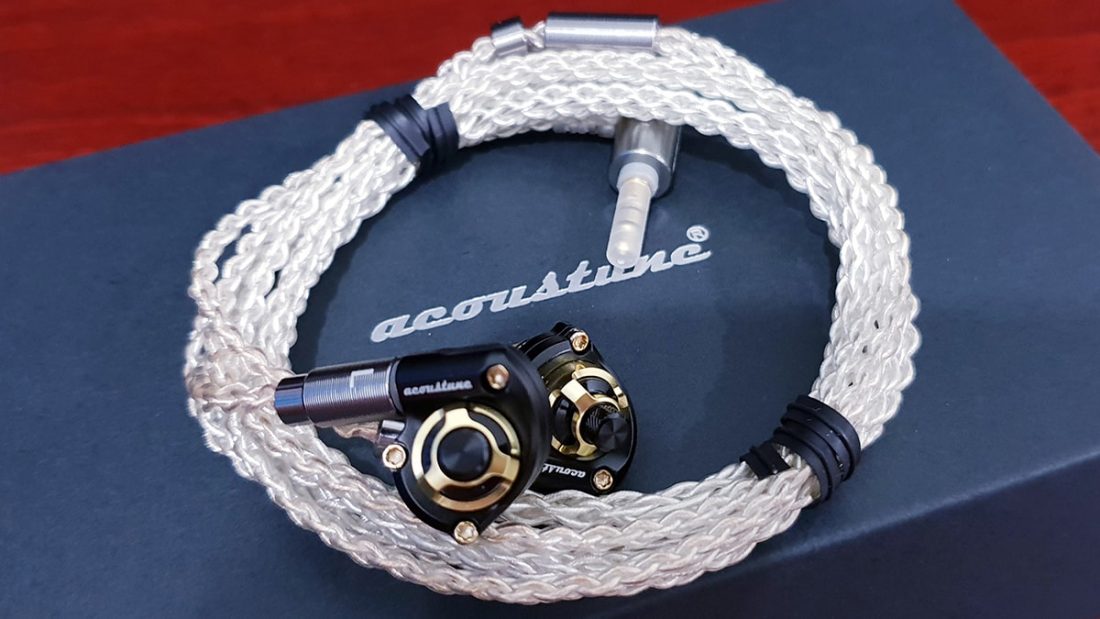
Acoustune is a new player in the cable game, but have the pedigree to be a solid contender. The stock ARC31 is no laughing matter, an 8-wire cable with original 3.5mm Pentaconn connector, which would probably sell for hundreds if sold separately (and they are!). It is made of 8 badass wires of silver-plated oxygen-free copper (OFC) with triple-shielding and a PVC outer layer for robustness.
Handling the cable is a joy. The cable is soft, supple, bends and submits to will (I mean that in a good way). Coiling and uncoiling don’t leave the cable with any memory effect. Best of all, the connectors, Y-split and Pentaconn jack are impeccably built and are reason enough to justify a separate purchase. My only problem with them is in aesthetics. The silver color does not match with the opulence of the black and gold earpieces, so guess what I did?
Acoustune ARC13
I bought another one of their cables with matching colors lol. Because for a truly magnificent performance, all senses should be engaged, and there’s nothing better than eye candy for that remarkable first impression. That’s how I am with earphones. I’m sha-sha-shallow. I can’t comment on smell and taste, however.
The ARC13 is made of 4 cores of artisan OFC, sheathed with durable PVC, braided to pristine perfection, and finished with an elegant 4.4mm Pentaconn connector. Completing the experience is the aluminum case, made just for ARC13 and built to last. I’m reading like a fine dining menu here because the sense of luxury has not escaped from me yet.
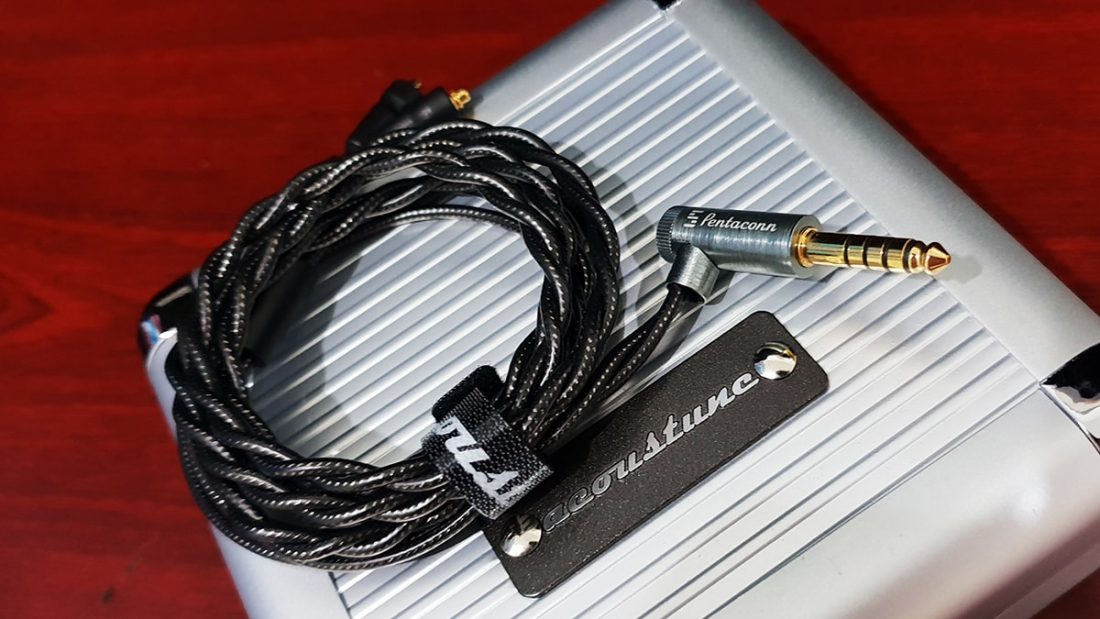
A Beautiful Bind
With fewer wires and more sheathing than the ARC31, the ARC13 is more flexible and handles even better. The cable is essentially tangle-free and stays in shape after you coil them for storage. They are almost as malleable and compliant as clay, so you can bet they photograph beautifully.
As for sound quality, the twin twisty twines of terror perform terrifically, providing a balanced sound across the spectrum against a pitch-black background. Note hits are clean, tight and well-defined while maintaining the organicity of 1650’s signature. The only difference between them is the ARC31 bestows a tinge more detail and brightness compared to the full-bodied, able-bodied ARC13.
Fit, Comfort and Isolation
I think I’ve covered all-metal housings before, and the fear of getting my auricles perforated at the slightest misfit or maladjustment. But for the jaw-dropping beauty of the 1650, I was willing to suffer some ear damage if needed. The feeling is akin to wearing a too-tight shirt just for a killer design. I was ready to grin and bear it. With its aluminum outer shell and inner brass chamber, part of me wished for a soft spot in the 1650. Here goes nothing…
And like nothing they went in. The inner part of the aluminum shells, the part that presses against your ears, are impeccably-finished and as smooth as they come. The cable ear guides bear a significant part of the IEM weight as well. So what you have is an inexplicably comfortable IEM despite what the build materials might suggest. TLDR comfy!
Hear Everything
Sound isolation is bad. Being a DD, don’t be surprised to find the 1650 amply vented. It lends an air-moving sensation that mimics speakers and relieves some sound pressure from the ear canals, but if you’re commuting or outdoors, the music won’t be entirely your own. Engine noise, wind noise, your mother-in-law, you’ll hear them. Add to the fact that the 1650 has quite a sha-sha-shallow fit, and this is an IEM best used indoors.
I swear, I’m trying my best but can’t seem to get that Bradley Cooper song out of my head.
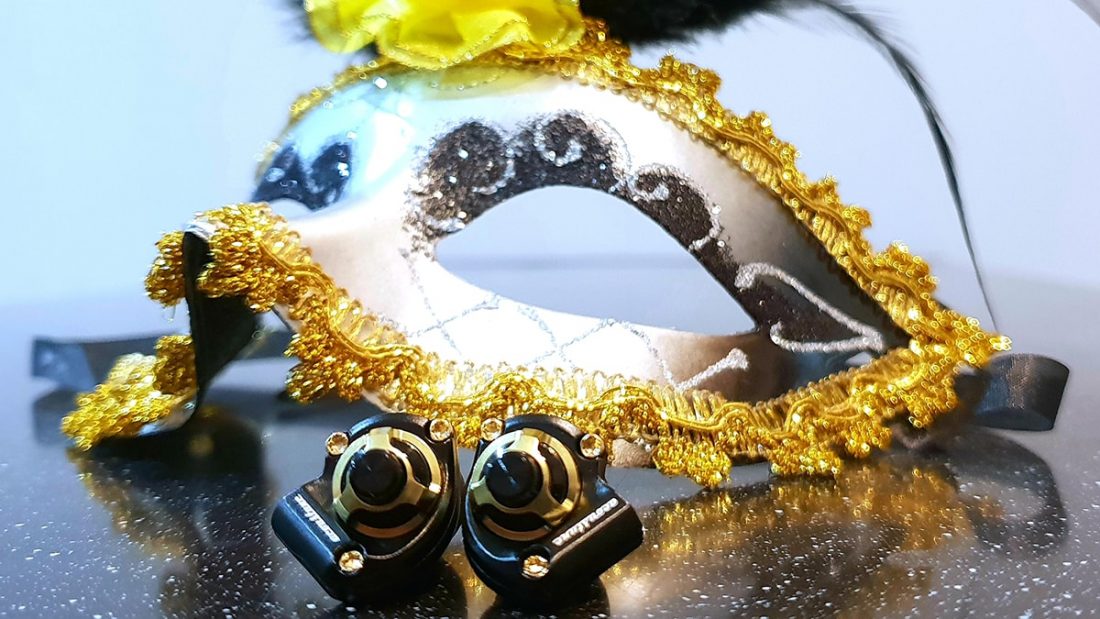
Sound Quality
When faced with something new and unfamiliar, I tend to ask about its culinary possibilities. Myrinx? Can it be cooked? It’s metal you say? Never stopped me. The Myrinx driver of the HS1650CU was diligently burnt-in with a slow simmer and low heat, to the tune of 150 hours, just because. I left the 1650 plugged into a source playing easy listening music for a week.
After breaking down the tasty cartilage and releasing its full flavor, I can say that the 1650 sounds more focused and precise. Notes are tighter and imaging rendered more accurate. Nothing breaks ‘em down like slow heat! The main setup used was iBasso DX200 with AMP8 > ARC13 > HS1650CU, a heavenly combination. Also, I used the AET07 ear tips almost exclusively.
Overall Sound Signature
It’s not easy to fall in love. Partly because I’m married (lol), or more likely because I already own a roster of very capable IEMs that transport me to La-La Land at my beck and call. So when I do fall in love, hard, to the extent I visited the Acoustune booth at an audio show several times a day, it’s either something truly extraordinary, or they were giving out free food.
Sting once famously wrote, if you love somebody set them free. No way man. I cling onto them for dear life, like those koala clip-on souvenirs. A new love is intense and irrational, but entices and invigorates, like learning how to use a new organ. Wait.
The HS1650CU has what I deem to be… a perfect tuning for my preferences.
Special Sauce
Let’s break that down a bit. The 1650 has a neutral-warm signature that plays nice with every genre I fed it. I am amazed by every nuance and facet of its sound from top to bottom. The deliciously rumbly subbass, the cleanly-elevated midbass, gorgeously emotional mids, and the electrifying treble combine to form a coherent, malevolent sonic juggernaut that brings me to my knees.
The 1650 is not perfect by any means. You can easily nitpick some weaknesses, especially in the technical department. For example, notes could be leaner and meaner, the soundstage could be bigger and airier, and overall resolution could be improved. However, the signature, with its valleys and peaks, should be left as is, because the tuning is absolutely spot-on for my tastes, and maybe for you too. It’s neutral-warm done right, and it’s my special sauce.
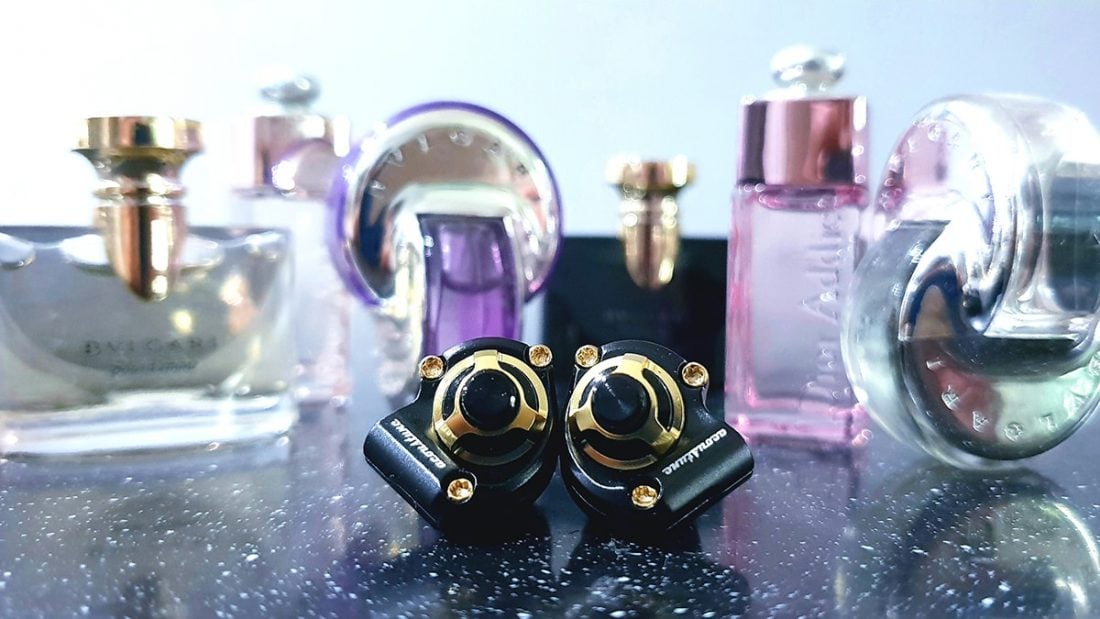
Bass
There’s a song about fat-bottomed girls that appreciate the lower end of things. The HS1650CU bass doesn’t have that crassness, but depicts bass on a grand scale, a sweeping, expansive scope. Just… fat. It approaches the epic, but remembers its place in the signature and collaborates for the common cause.
The bass has an unmistakably warm tilt. Notes are full, rounded, and crazily physical! In fact, they carry so much authority they might be your boss’ boss. It pounds and grinds like the hardest worker in the room. Like Rafael Nadal, the tennis player who hits harder than anyone to the point of injuring himself, recovering just in time to win the French Open. He’s so good at this pattern he’s done it 11 times.
Spanish Bass Monster
So back to the Nadal bass, the polar opposite of a fat-bottomed girl. The extension seems bottomless. There is equal emphasis on subbass and midbass, like twin towers in a frequency graph. Notes plummet with phenomenal impact and air, like angry subwoofers. When it reaches the abyss, you feel it at your throat, and hear it ringing in your ears, leaving you breathless.
But before you declare “Spanish bass monster”, there’s some grace within the madness. The bass punches hard, Superman-hard, but fast, lending a natural decay with moderate speed. Notes flutter away cleanly into the background before bracing for the next impact. The note deftness enables layering to be defined intricately too. It’s not the fastest, nor the most detailed bass, but is deliciously fun with little trade-off in technical ability.
Mids
Continuing on the concept of grace, I am often reminded of the REM song “At My Most Beautiful” when describing the mids. Not because of how good Michael Stipe looks, mind you. While the treble and bass are no pushovers nor afterthoughts, the mids rightfully take center stage and leave you in wonderment, with its potent mix of timbral accuracy and clarity. It’s found a way to make me smile.
The mids split the fine hair between warmth and detail right down the center. It’s perfectly balanced. Like the bass, notes start off rich and moist, but end in a palpable texture, like a nutty chocolate cake. The tone and timbre is spot on, and I’ve lost myself in the music many times while the mids enchant and spellbind me. Until deadline day comes and I have to rattle off more words to pass as a review lol.
Wilful Submission
Instruments sound realistic, with the feeling of a live performance, but 1650 performs like a vocal specialist. Placed in front of the head, male vocals sound raw, emotive, powerful and explosive in turns. It carries the weight from the bass handsomely.
Female vocals are equal parts articulate and rich, lush and ethereal, seducing and lulling you into wilful submission.
I could go on and on about the mids, and it’ll quickly descend into blubbering. It’s a venus flytrap and I’m the first fly in line. Every string pluck, guitar strum, and worse still, vocal exercise is meticulously engineered to tug into my heartstrings, to awaken my desires, to make me, simply, feel. The 1650 has one of the most accomplished mids I’ve heard, at any price range, and serves as a yardstick for future reviews.
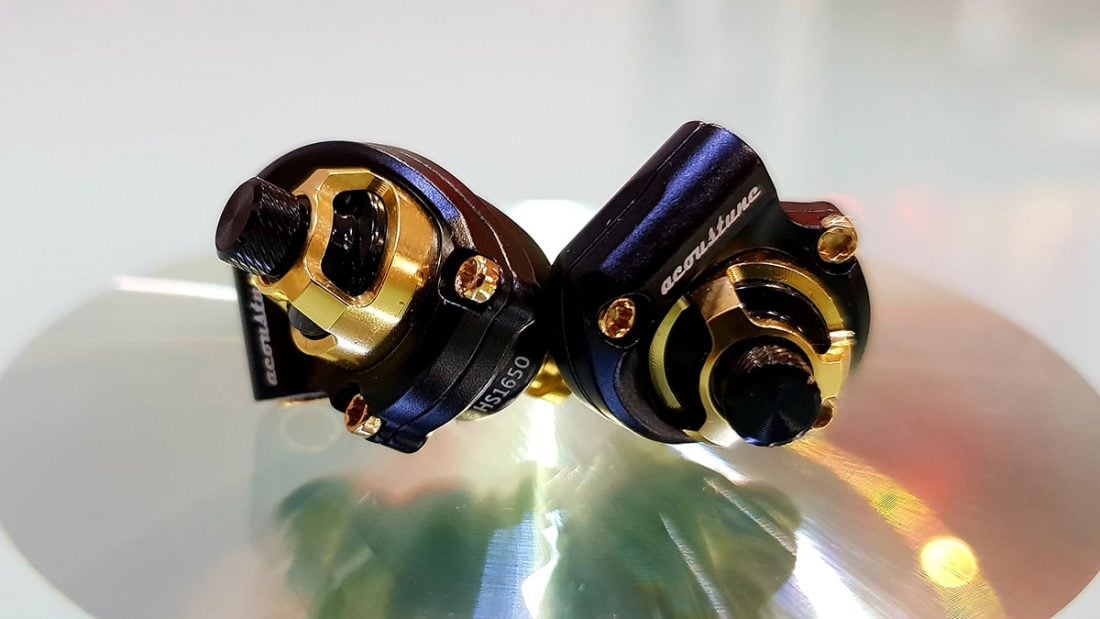
Treble
I often wonder why people go through all the effort to climb mountains. No trophy, no souvenir shops, no shaman dispensing winning lottery numbers. All you have is the view and a sense of achievement. A thrill-seeking friend obliged an answer, “the journey itself is the reward”. We look back at how stunning the prodigious 1650 tuning has been thus far, and finally, we look skywards.
The airy and articulate upper mids carry into the treble, with tonal accuracy very much intact. Up here, notes are carefree and travel swiftly and playfully. Cymbals crash with bite and outright precision, as do brass and woodwind instruments, straddling the line between energetic and sibilant. At note’s end, the treble decays beautifully, but not before stirring up some excitement on the attack.
Unity in Harmony
The treble is lively and never harsh. Underneath it all, like a pizza base holding all the toppings together, the tunefulness and musicality of the 1650 are absolute. The coherence between bass, mids, and treble is what makes this signature click. Carrying warmth and note weight from the lower registers, the treble is not the most resolute, but in the grand scheme, it fits the signature precisely.
Soundstage and Imaging
Imagine traversing the vastness of the expanding universe, exploring space beyond space, and contemplating the concept of infinity. Mighty huge eh? Now imagine 10% of that size. Not that grand anymore, but still pretty big as long as you don’t compare. This is where we start discussing the HS1650CU soundstage.
For all the heights the 1650 tuning has climbed, it would not sound as it should without the assistance of its soundstage, imaging and spatial abilities. What’s remarkable about the staging is, although the bass is thick, mids are lush and the treble has an organic tilt, the stage proportions provide everyone their own turf, preventing a bloody gang war.
Shoebox-sized
The head-stage resembles a shoebox. Width is arguably the biggest, while height and depth are modest but appreciable. The dimensions allow each component of the music to be spaced out evenly, with a little hint of congestion even in fast tracks. However, the full, dynamic bass presents a rush of warm air to the stage, preventing a totally clean background.
Imaging is focused, accurate, and moreover, realistic. Closing your eyes, you can picture a full orchestra or a five-piece band enveloping you and submerging you into the music. The 1650 won’t wow you with the most atmospheric stage or the needlepoint-precise imaging, but it will floor you with its realism, over and over again.
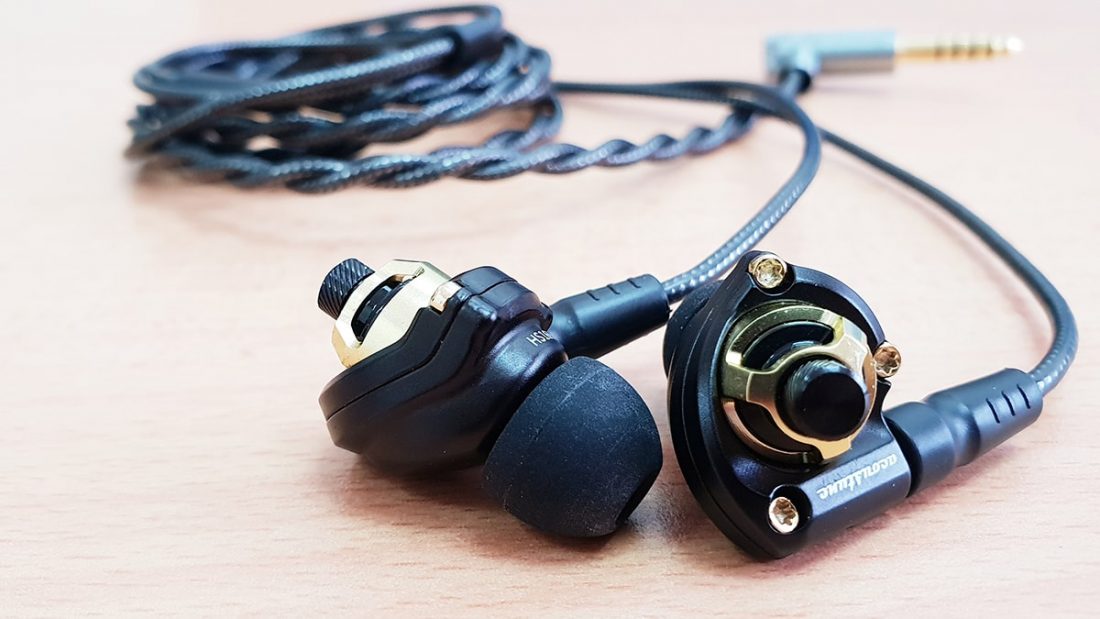
Comparisons
Today we’re doing a special comparison section, pitting together my favorite tunings in different price brackets. All of these wowed me at some point in my life, and if you asked me what my tuning preferences are, rather than describe in detail, I point to one of these babies. For one night only, we have three hammers for a night of expensive hammering.
FiiO FH5
At USD260 the FiiO FH5 isn’t exactly cheap, but is the most budget-conscious of the three. Easily FiiO’s best IEM to date, it could be their statement product if FiiO weren’t constantly improving and releasing new products at a blink-and-you’ll-miss pace.
The FH5 has been described as W-shaped, neutral-warm, or balanced. It’s an all-rounder with slight emphasis in the lower end of things, without diminishing the presence of the mids and treble. Compared to the HS1650CU, FH5 has a more polite, people-friendly bass. Subbass reach is almost an equal to 1650, but hits like a feather, whereas 1650 pushes bass air like an industrial-sized hairdryer.
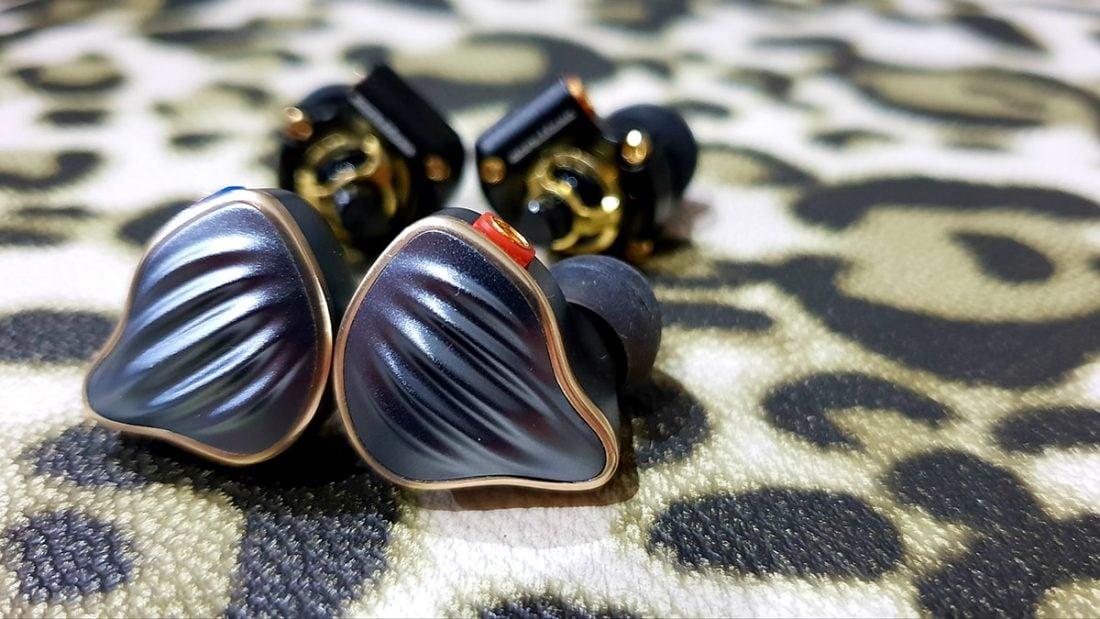
Smooth Operator
Moving up, FH5 has a more rounded and gentle midbass and mids, conveying good amounts of detail but with smoothness more the modus operandi. Notes are wooly as a mammoth and emotive. 1650’s notes have better detail and dynamics, more texture and bite, conveying an utterly realistic sense of well, realism. Even FH5’s glorious vocals have been kept in check by 1650, sounding slightly muffled compared to 1650’s soaring heights.
FH5’s treble is another exercise in smoothness, any smoother and we’ll run out of butter. There is a playful shimmer in some treble notes, but that’s it. 1650 commands more extension, more presence, and a better sparkle, while staying on the safe side of sibilance. For imaging, 1650 is more pinpoint and natural, but FH5 can keep up in slower tracks. For soundstage size, however, FH5 is totally obliterated by 1650, losing out in all dimensions.
Lucky Loser
Despite FH5 being trounced in every single round, there’s no denying that 1650 might be a direct upgrade for those who love the FH5, everyone except those sensitive to treble. But in this crazy hobby, most people will already find much to love with the FH5, with the nearly three times more expensive 1650 confined to enthusiast circles.
QDC Gemini
We bring out one of the big boys in my collection. At USD1715 with 8 balanced armatures (BAs), Gemini is firmly in TOTL territory, a wallet-drainer and ender of financial stability. When I first heard it I thought I heard God’s voice. It has a divine tuning, balanced, addictive and clear from top to bottom, capable of making believers out of staunch skeptics.
The Thunderclap
Two highlights of the Gemini, are an unbelievably immersive sound signature, and a bass switch because it’s time to get down and dirty. 1650 starts the battle strong, with thunderous subbass rumble and gutsy midbass leading the way, its earth-moving DD attack and decay sounding more natural, accurate and impactful compared to the Gemini.
Gemini however, has many tricks up its sleeve. He flicks on the bass switch and mounts a comeback, winning in speed, dynamism, detail, texture, and airiness. While nowhere near the visceral grittiness of the 1650, Gemini’s bass is just as listenable.
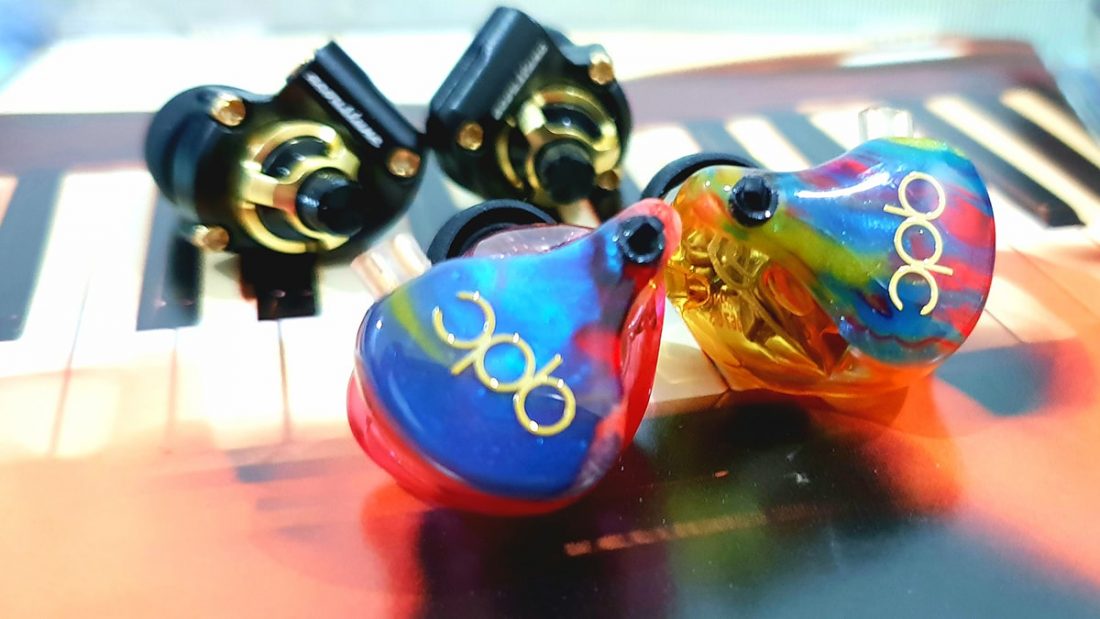
A Religious Experience
From here, as we climb the ladder from mids to treble, we realize how even 1650’s near-flawless tuning can be tweaked for the better. In general, Gemini injects more liveliness and higher resolution, and is, even more, a vocal masterclass than 1650. It’s like 1650 after months of training, emerging more focused, leaner and quicker, but just as fun.
The Achilles’ heel of Gemini though, is its small soundstage. Immersion has a price, the price of letting the singer and the band come too close to you, and so the sensation of spaciousness suffers. 1650 has better stage dimensions, but predictably, Gemini’s high-resolution means its imaging capabilities are head and shoulders above 1650’s.
Directions in Life
Gemini sounds like 1650 unchained, with a similar signature tuned just a bit brighter and tighter, trading some smoothness and body for crispness and utmost clarity. It’s so clear it’ll start giving you directions in life. If 1650 performs in clubs and small bars, Gemini regularly headlines in sold-out arenas, befitting its superstar status. Like Coldplay, but manlier.
Final Words
Acoustune, like down-to-earth philosophers, likes to keep things simple. Take a high-quality dynamic driver, make sure it’s the best you can make, and give it the most musical, uncomplicated tuning possible.
No multi-drivers, no messy crossovers, and definitely no histrionic pricing, just solid earphones.
They even come with a ready-made upgrade cable to set you on your musical journey.
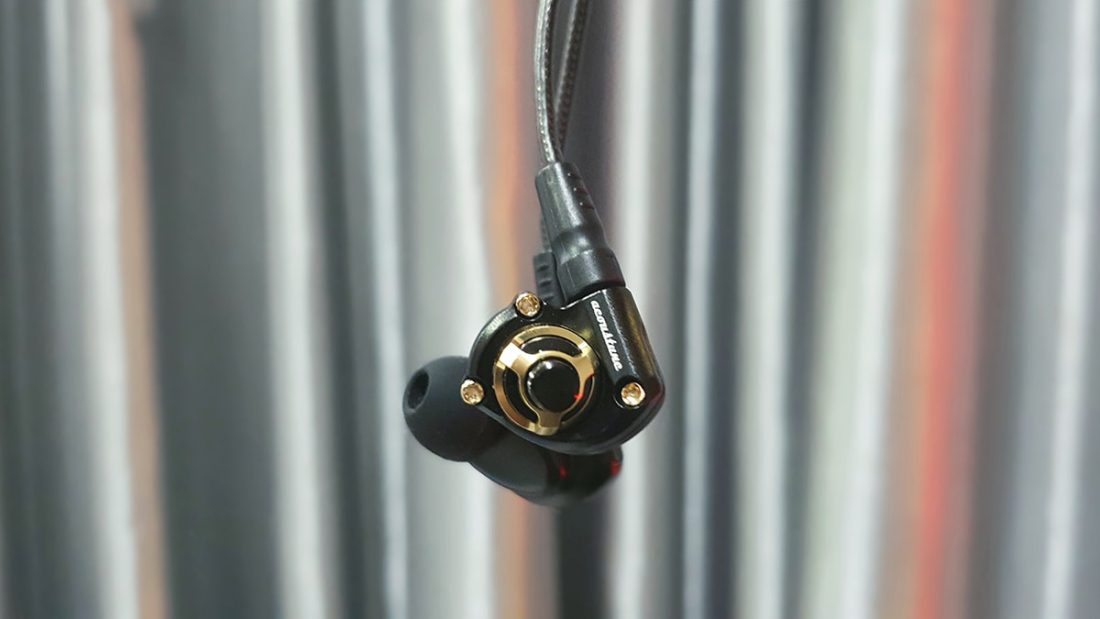
Revelations
Listening to the HS1650CU has been a revelation of sorts. I would never have dreamed of finding such an accomplished tuning at this price range. But the 1650 is much more than that. Like Lex Luger, it’s the total package. From the elegant unboxing, to the premium accessories, to the earpieces themselves, all suggest that the 1650 be priced much higher than they actually are.
But yet, here we are. 2018 and a clear-cut entry for IEM of the year chiefly because it sounds within touching distance of TOTLs costing much more. Acoustune, like IMR’s splendid R1 before this, is spearheading the return of the affordable dynamic driver flagship. It’s a certified, amplified, bona fide achievement. See you at the front of the line.
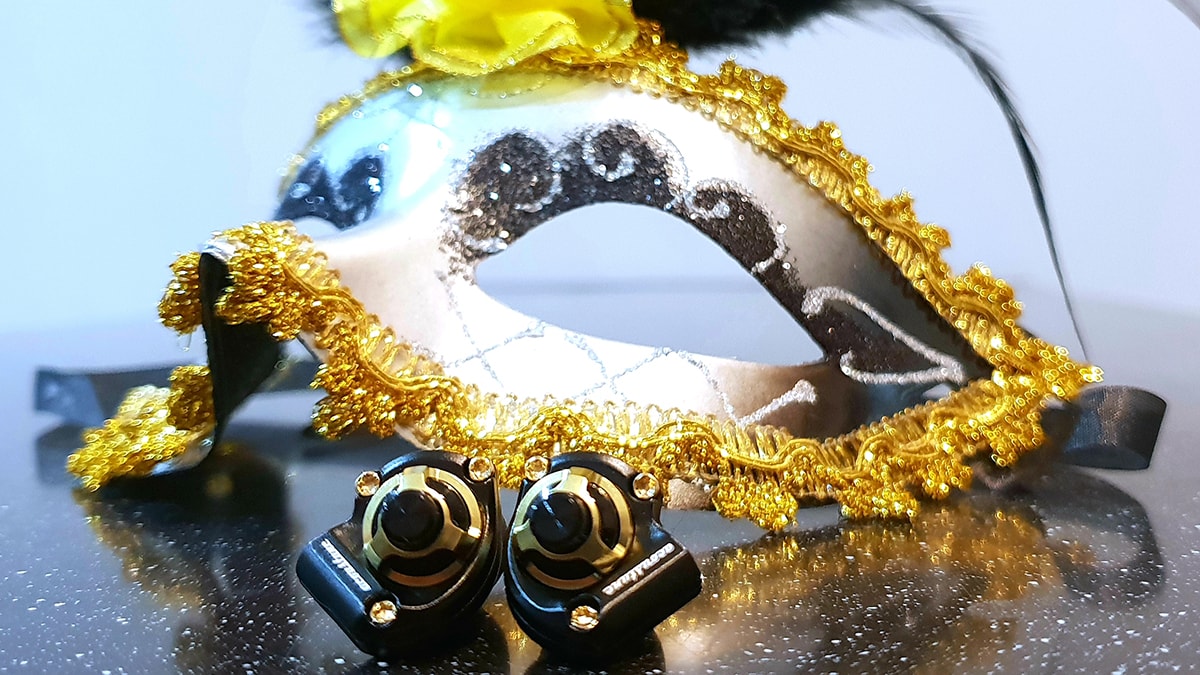
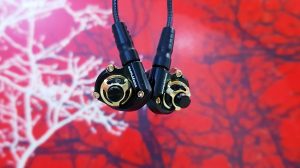
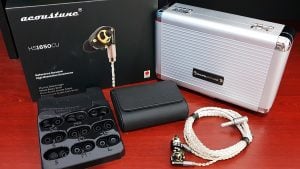
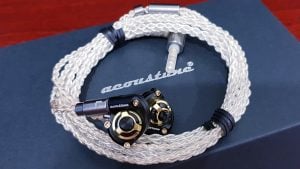
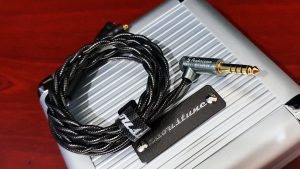
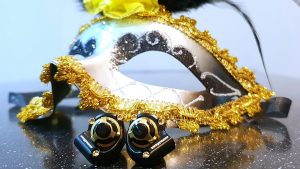
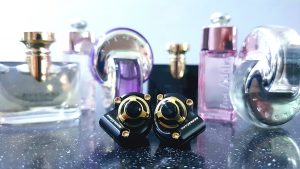
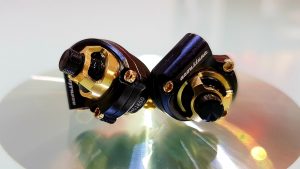
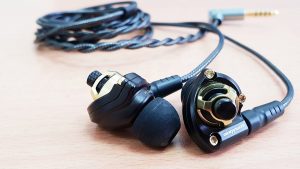
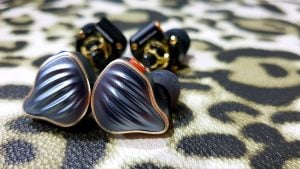
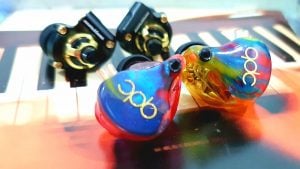
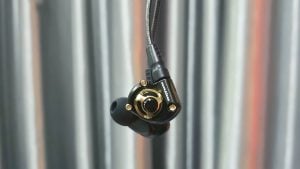
You’ve just convinced me for my new pair of IEMs, thank you.
“sha-sha-shallow” LOL.
The promise of bass, soundstage and impeccable construction of a single driver IEM is what I find appealing, and the fact that you compared it to the Gemeni(!) and started it was an upgrade over the FH5 and R1sealed it for me.
Cheers,
Jean
Thank you for your kind words. I do enjoy this little gem.